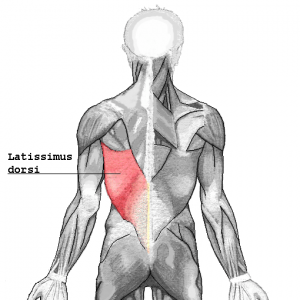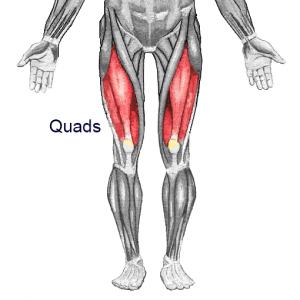Eccentric muscle contraction is a complicated term, but it’s actually quite simple: it’s when you’re exercising a muscle by lengthening it under strain instead of shortening it.
So if you’re doing a biceps curl for example, the part where you’re lifting the dumbbell up (towards your shoulder) is not an eccentric muscle contraction for your biceps, because you’re shortening your biceps. However, when you’re letting the dumbbell go down, that is an eccentric muscle contraction for your biceps, because you’re lengthening your biceps.
Here’s a video that illustrates this (it’s a bit lengthy and boring, but explains the concept very well about 2 minutes into the video):
Eccentric muscle contractions are what bring you the biggest muscle gains, because they cause more micro-tears to the muscle fibers, which then leads to a faster increase in the size of your muscles.
Eccentric muscle contractions are also referred to as:
- braking contraction
- negative work
- negatives
- “negative portion of a rep” (among weightlifters and bodybuilders)
Sports medicine realized the importance of eccentric muscle contractions when an article got published in 1995 that defined them as “the controlled lengthening of muscle under tension.”
Eccentric Muscle Contraction Exercises
So if this is the kind of muscle activity that brings the biggest muscle gains, you probably should do more of it, right? And you probably already are doing quite a bit of these, because some of the most common exercises include eccentric muscle contractions:
Push-ups
(when you’re lowering, your chest muscles are lengthening while also at the same time carrying the load)
Pull-ups
When you’re lowering your body, you’re actually stretching your lats. (Lats = latissimus dorsi muscles. These are the 2 large muscles in your back that, if you train them properly, give your torso a nice V-shape.)

Lowering weights slowly
Whenever you’re lowering weigths, you’re putting your muscles under stress while at the same time lengthening them. That’s one of the reasons why you often should lower your weights more slowly than you’re lifting them up. In general, a 1-to-3 ration is good (count to 1 while lifting up, and then count to 3 at the same speed while lowering it, so that the lowering of the weights takes 3 times the amount of time the lifting takes).
Here’s what Jeff Cavaliere MSPT, CSCS said about the importance of eccentric muscle contractions when you want bigger bicepts:
The negative or “eccentric” portion is the slow and controlled lowering of the bar back to it’s starting position. Notice I said SLOW and CONTROLLED? That’s the part that seems to get overlooked.
You see…it’s during this eccentric part of the rep that you actually combine both tension AND stretch. What this does is cause mini micro tears in the muscle (don’t be horrified…it’s a good thing!). These mini fiber tears are actually what your body repairs while you rest and recover to allow you to come back bigger and stronger.
By simply letting the weight drop back to the starting position of the exercise without fighting this momentum and keeping the tension on your biceps throughout, you’re literally allowing your chances to fall that you’ll ever have arms that fill your t-shirts! Make the shift towards slowing this part of the repetition down (I’ll tell you exactly how much in the next SIN) and you’ll notice your results speed up in your quest for legalized guns!
Walking or running down stairs or down a hill
When you’re walking or running downwards, you’re also putting your muscles under stress while at the same time lengthening them.
Let’s look at the physiology of this:
When you’re running downhill, your legs are usually straight when they hit the ground. That’s when your quad muscles are at their shortest.

Then, as your feet roll your legs start to bend, your quads start to stretch, while at the same time being under tension. And there we have: an eccentric muscle contraction.
Warning: Some of you might think “well, if downhill is so great, I’m just going to do that all the time!” However, the issue here is that there’s also a higher risk of injury when running downhill, simply because the impact forces you expose your joints to are very higher than running on flat roads or even uphill.
If you want massive gains in your quads, another exercise can be a single-leg rear lunge, or just a single leg squad.
Delayed Onset Muscle Soreness (DOMS)
Eccentric muscle contractions often cause DOMS—typically the muscle soreness peaks 48 hours after the workout that caused them, and in some cases it can last up to a week.
Which is a good thing if you want to gain muscle! Because the soreness is caused by micro-tears in your muscle fibers, and when those micro-tears heal, your muscles grow.
